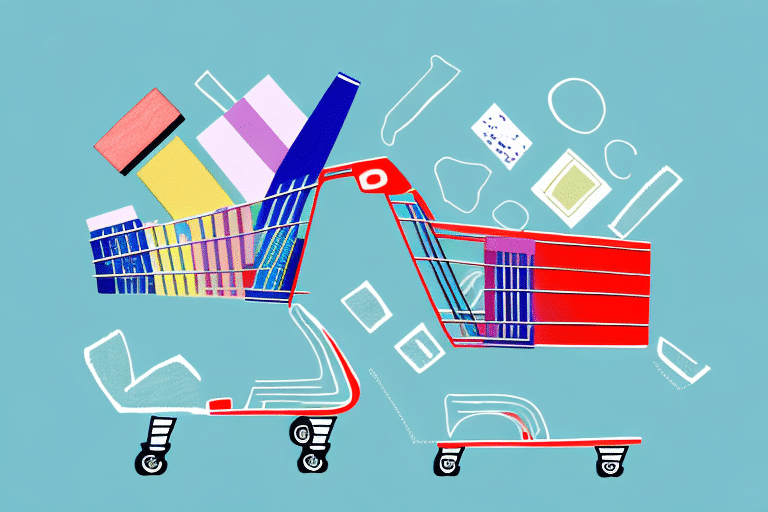Understanding Shopping Cart Abandonment
Shopping cart abandonment is a significant challenge in the e-commerce industry. It occurs when customers add products to their online shopping carts but leave the website without completing the purchase. This phenomenon not only affects immediate sales but also impacts long-term business growth and customer retention.
The Cost and Impact on Online Retailers
The repercussions of shopping cart abandonment are substantial. According to Statista, the average cart abandonment rate across industries is approximately 70%. With global e-commerce sales projected to reach $6.54 trillion by 2023 (eMarketer), the potential revenue loss due to abandoned carts is staggering, estimated at around $4.6 trillion annually.
These losses arise from various factors, including high shipping costs, lengthy checkout processes, and lack of payment options. Addressing these issues is crucial for online retailers aiming to optimize their sales funnels and enhance profitability.
Key Reasons Behind Cart Abandonment
Unexpected Shipping Costs
One of the primary reasons customers abandon their carts is the surprise of unexpected shipping fees. Transparent pricing, including shipping costs from the outset, can mitigate this issue.
Complicated Checkout Process
A lengthy or complex checkout process can deter customers. Streamlining the checkout to require minimal steps and essential information encourages completion of purchases.
Lack of Payment Options
Limited payment methods can frustrate customers who prefer alternatives like digital wallets or installment payments. Offering diverse payment solutions caters to a broader audience.
Concerns About Security
Customers are wary of sharing personal and financial information online. Ensuring robust security measures and displaying trust badges can alleviate these concerns.
Website Performance Issues
Slow loading times and technical glitches can lead to frustration, causing customers to abandon their carts. Optimizing website performance is essential for retaining potential buyers.
Calculating and Analyzing Abandonment Rates
Understanding the extent of cart abandonment is the first step toward addressing it. The abandonment rate can be calculated using the following formula:
Abandonment Rate (%) = [(Carts Created - Purchases Completed) / Carts Created] × 100
For instance, if 1,000 shopping carts are created and 300 purchases are completed, the abandonment rate would be 70%.
Analyzing factors contributing to high abandonment rates involves reviewing customer feedback, monitoring website analytics, and conducting A/B testing to identify and rectify barriers in the purchase process.
Effective Strategies to Reduce Cart Abandonment
Offer Free Shipping
Providing free shipping can significantly reduce abandonment rates. Research by Invesp indicates that free shipping can increase conversions by up to 30%.
Simplify the Checkout Process
Reducing the number of steps and necessary information during checkout can enhance user experience. Implementing a one-page checkout or guest checkout options can streamline the process.
Enhance Payment Options
Integrating multiple payment methods, including digital wallets like PayPal and Apple Pay, as well as installment options, caters to diverse customer preferences.
Display Trust Seals and Security Badges
Visual indicators of security, such as SSL certificates and trusted payment icons, reassure customers about the safety of their transactions.
Implement Retargeting Campaigns
Using email reminders and targeted ads to re-engage customers who have abandoned their carts can recover lost sales. Personalized incentives, such as discounts or free shipping offers, can encourage completion of purchases.
Optimizing the Checkout Process
Mobile Optimization
With the increasing use of mobile devices for online shopping, ensuring a mobile-friendly checkout experience is vital. This includes responsive design, easy navigation, and mobile-specific payment options.
Clear Pricing and Transparent Policies
Providing clear information about pricing, taxes, and shipping from the beginning eliminates surprises that might lead to abandonment. Transparent return and refund policies also build customer trust.
Save Cart Feature
Allowing customers to save their carts for later can reduce abandonment by giving them the flexibility to complete purchases at their convenience.
Leveraging Personalization and Retargeting
Personalization enhances the shopping experience by tailoring product recommendations and offers based on customer behavior and preferences. Utilizing data analytics to understand customer journeys can inform targeted retargeting strategies.
For example, personalized email campaigns that remind customers of the items left in their carts, coupled with relevant product suggestions, can boost conversion rates.
Future Trends in Reducing Cart Abandonment
The future of reducing shopping cart abandonment lies in leveraging advanced technologies and evolving consumer expectations. Key trends include:
- Artificial Intelligence and Machine Learning: These technologies can predict customer behavior, personalize experiences, and optimize the checkout process in real-time.
- Voice Commerce: Integrating voice-activated shopping options can streamline the purchasing process, making it more convenient for users.
- Augmented Reality (AR): AR can enhance product visualization, helping customers make informed purchasing decisions and reducing hesitation.
- Enhanced Security Measures: As cyber threats evolve, implementing robust security protocols will remain crucial in maintaining customer trust.
Staying abreast of these trends and continuously innovating can help online retailers effectively minimize shopping cart abandonment and foster sustained growth.
Conclusion
Shopping cart abandonment poses a significant challenge for online retailers, but with a comprehensive understanding of its causes and the implementation of strategic solutions, businesses can mitigate its impact. By optimizing the checkout process, offering personalized experiences, and leveraging modern technologies, retailers can enhance customer satisfaction, increase conversion rates, and drive sustained revenue growth.




















